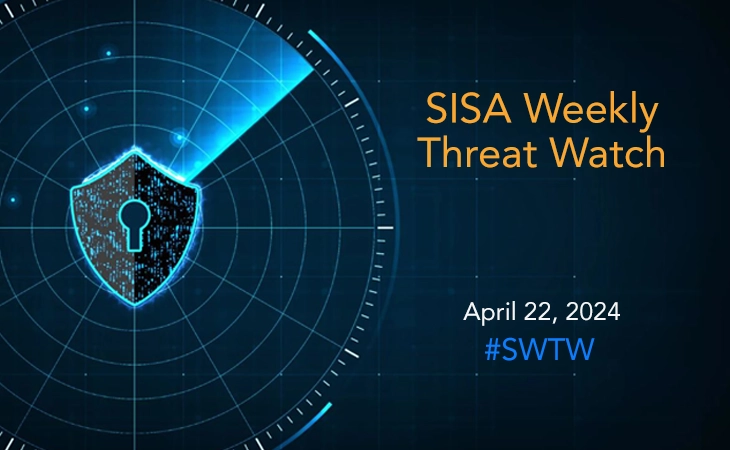Home » Biggest Cybersecurity Trends in 2023
Biggest Cybersecurity Trends in 2023
Share on

Cybersecurity Trends is an Annual hot topic amongst bloggers, news reporters, conference sessions, Ted Talks and a million other outlets. This year’s entry’s all mimic each other when listing the top movements:
- IoT and Cloud Security
- Work From Home Cybersecurity Challenges
- Cultivating a Security Aware Culture throughout the Organization
- State Sponsored Attacks are now targeting Businesses at an equal rate.
- Realtime Data monitoring and safeguards
- Targeted Ransomware will continue to rise significantly.
But I believe there is one trend, specifically in North America but also globally, that out paces all of these. Particularly since it weaves its way into all of them. And that’s the rapidly growing landscape of Artificial Intelligence (AI). But this is VERY much a double-edged sword. AI can quickly and efficiently crunch vast amounts of data points in order to predict, thwart, detect and respond to threats. Conversely, the bad actors of the world are also using AI to become more proficient at:
- Identifying weaknesses and ingress points
- Create incredibly clever and realistic Phishing attacks.
- Automating and coordinating their attacks.
- Creating Synthetics Identities to use for various nefarious reasons.
- Manipulate Social Engineering scripts.
- More efficient Password Hacking
Let’s talk about how AI can HELP your cybersecurity posture. The number of areas where AI can positively effect our industry’s capabilities against the hackers is equally lengthy and impressive.
- Automated Testing to look for areas of weakness.
- Ability to identify patterns and diagnose attacks in realtime
- Respond to incidents in realtime
- Behavior analysis of both humans and transactional data
- Advanced Authentication factors including Biometric Liveness Detection methods, face and voice biometric accuracy levels and behavioral biometrics
There are those that call this double-edged sword an “arms race”. So how do you stay ahead in an arms race when the machines are learning on their own to battle each other?? Well to answer that, you need a better understanding of how AI works. It’s not magic. An AI/ML engine needs to actually be “taught” things initially and continually above and beyond it’s own learning. These engines rely on algorithms and statistical models (advanced ones are call Neural Networks) to analyze all sorts of data and generate decisions based off that. Which means, they need to be taught by entering large datasets to train the system. Once trained sufficiently, an AI/ML engine can be deployed. But just like us humans, these engines need to continually advance and adapt to new data. And thus will only be as good as the datasets at their disposal. Otherwise an AI/ML engine can be accused of being just like me… using too much “old school thinking”.
So they key to winning an AI/ML arms race is to consistently increase the quantity AND quality of input data. And quality equals diversity of datasets also! This is where I think we can zero in on a key piece of ammunition in the arms race. That quality and diversity of data that gets inputted into the AI/ML engines NEEDS to come from a concerted effort of collaboration from the cybersecurity community. Forensics investigations and the learning from them need to be disseminated and shared with these engines to make them better! And this needs to happen from a Global aspect. Patterns of attacks in Asia have a different flavor to them then the attacks in North America or Europe. The attacks into Government sites have a different approach then the ones to the financial industry or the supply chain. But ALL of these flavors need to make it into our AI/ML engines to help us as a community thwart the constant barrage of attacks on a daily basis. And that’s why I think that AI will be the very top Cybersecurity trend in 2023!
SISA is leading the way in this regard. Our company mission includes sharing our vast global knowledge leadership with the cybersecurity community. SISA is in a unique position based on the amount and variety of worldwide investigations that we perform. Not only do we feed that knowledge leadership back into our services, but we feel it’s a responsibility to disseminate in many different forms…like our Annual Top 5 Learnings report. It’s often said that humans are always the weakest link in cybersecurity. Well I (and SISA as a whole) feel like humans can and ARE the strongest line of defense! When we share and collaborate…WE WIN THE ARMS RACE!

Biggest Cybersecurity Trends in 2023
- April 23, 2023
Introduction
In an increasingly data-driven world, organizations must harness the power of their data while maintaining robust information security. Data discovery, a crucial aspect of data management, can help organizations uncover valuable insights while simultaneously ensuring data protection and compliance. This blog post will discuss why organizations should consider data discovery from an information security perspective and provide a comprehensive approach to successfully implement it.
Data Discovery as a key tool for Information Security
Data discovery is a critical component of an organization’s information security strategy. It involves the identification and classification of all data within an organization’s infrastructure, including sensitive data, and is essential for developing effective security controls. Without data discovery, an organization may not be aware of all the data it possesses, where it is located, or who has access to it, leaving them vulnerable to data breaches and other cyber threats. Data discovery enables an organization to gain greater visibility into its data, implement appropriate security measures, comply with data privacy regulations and maintain the trust of their customers. From an information security standpoint, there are several reasons why organizations should consider data discovery:
1. Identify sensitive data:
Data discovery allows organizations to locate and classify sensitive data, such as personally identifiable information (PII), intellectual property, or financial data. Understanding where sensitive data resides is essential for implementing appropriate security measures and complying with data protection regulations like GDPR and CCPA.
2. Enhance access control:
By understanding the nature and location of critical data, organizations can establish role-based access controls and implement the principle of least privilege. Data discovery helps ensure that only authorized personnel have access to sensitive information, reducing the risk of unauthorized access and data breaches.
3. Monitor and audit data usage:
Data discovery tools can help organizations monitor and audit data usage, ensuring compliance with regulatory requirements and internal policies. By tracking data access and usage patterns, organizations can identify anomalies, such as unauthorized access or data exfiltration, and take prompt action to prevent potential breaches.
4. Improve data governance
Implementing data discovery allows organizations to establish a strong data governance framework. This framework includes policies, procedures, and controls to manage data usage, ensure data quality, and maintain data security throughout its lifecycle. Besides, data discovery can help organizations streamline their data management processes by eliminating unnecessary data and reducing the risk of data duplication or inconsistency.
Data Discovery for a strategic approach to Information Security
1. Develop a clear data discovery strategy:
Before embarking on data discovery, organizations should develop a clear strategy that outlines the goals, scope, and objectives of the initiative. This strategy should prioritize data security and compliance, ensuring that data discovery efforts align with the organization’s overall information security program.
2. Choose the right tools:
Select data discovery tools that cater to your organization’s specific needs and are capable of addressing information security concerns. Look for tools with features such as data classification, data lineage, and access control capabilities to enhance your data security posture.
3. Create a cross-functional team:
Establish a cross-functional team with members from data management, information security, and relevant business units. This collaborative approach ensures that data discovery efforts take into account diverse perspectives and maintain a strong focus on information security.
4. Implement data classification and labeling:
Use data discovery tools to classify and label sensitive data according to predefined categories and risk levels. This information can then be used to implement appropriate security controls and data handling procedures.
5. Monitor and audit regularly:
Continuously monitor and audit data access, usage, and security controls to ensure ongoing compliance with regulatory requirements and internal policies. Regularly review and update your data discovery strategy to address evolving security threats and business needs.
Conclusion
Data discovery offers a wealth of benefits, from uncovering hidden insights to driving innovation. However, organizations must also prioritize information security in their data discovery efforts. By developing a clear strategy, choosing the right tools, and fostering collaboration, organizations can unlock the full potential of their data while maintaining a robust information security posture. Results from the data discovery process should help organizations address their information vulnerabilities with thorough details, customized reports, data categorization, and risk assessments that can be used to design improvements and remediation action plans.
Latest
Blogs
Whitepapers
Threat-a-Licious
Customer Success Stories
 USA
USA India
India APAC
APAC Middle East
Middle East Global
Global






 Facebook
Facebook Linkedin
Linkedin  Twitter
Twitter Youtube
Youtube








